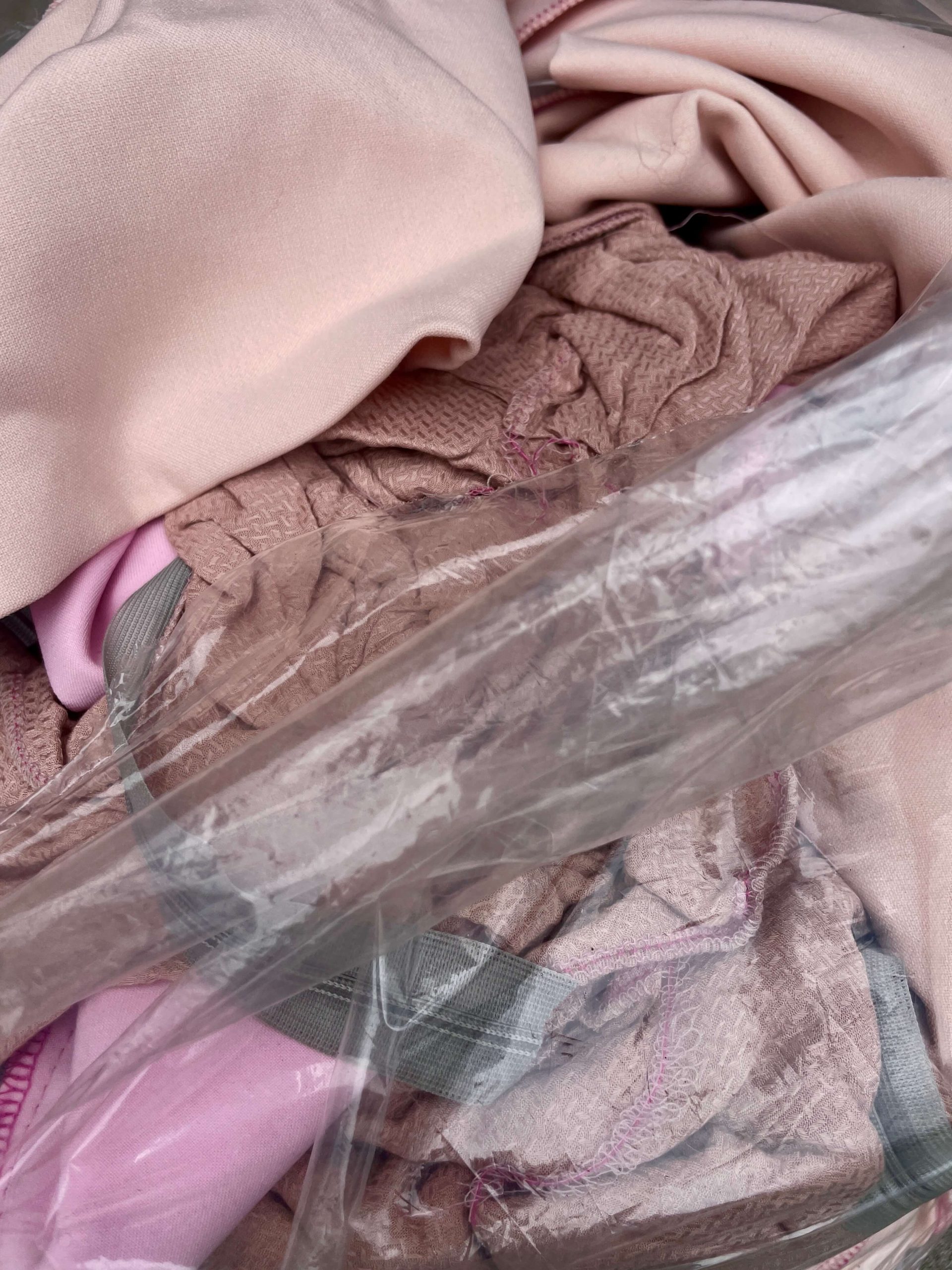Materiality of the archive
When we started thinking about how to show material objects in the archive, such as pieces of stage design or costumes, we started with a trip to Warsaw’s Bielany district, where we have a TERAZ POLIŻ self-service warehouse. Looking at the mixed-up, roughly arranged items, we decided that we didn’t want to isolate and catalogue them, but rather treat them as a fascinating whole, from which some items might fall out at an unexpected moment. We created a video series of spoken micro-stories from what slipped out of the container. In the videos, which can be found in the tabs of individual projects, the artists present a number of objects intuitively drawn from the objectual weave and present them with a spontaneous narrative. The pieces of set designs and costumes, which are in the rented storage container, are not an archive in the hegemonic sense – they are a material, spatial record of the creative process, and its parts don’t build up a standardised resource, but a weave of objects opening up to the researcher with an autonomous and yet networked narrative. If one were to describe the storage container as an archive, it would be a weak one in an ontological sense. It would refer to a drifting story more than to hard evidence of existence.

At its root, archives are one of the tools of power – the first archives were established at church institutions and seats of rulers. The political nature of archives is also linked to, among other things, the development of technologies that produce and sustain their existence. But the permanent, stable identity of archives is now undermined by new theories about the positioning of knowledge creation and thus the fluidity, heterogeneity and subjectivity of this process. These theories allow for a different perspective on archives. From this perspective, the archive becomes something alive, never finished, a subject to metamorphoses, and is set in the materiality and peculiarity of the world as a system of relations.
The process of document production takes place through cataloguing and immobilisation of objects. Like beetles in Baltic amber, the objects appear susceptible to human cognitive and analytical operations. The past thus becomes something that can be locked behind heavy doors of the repository without the fear that its parts will begin to move, to reveal their vital power. However, refusing to catalogue in a radical order directs the archivist towards the materiality of the archive, which is understood by exploring reality through the body, in acknowledging its discontinuity, porosity, susceptibility to injury and readiness to move.

